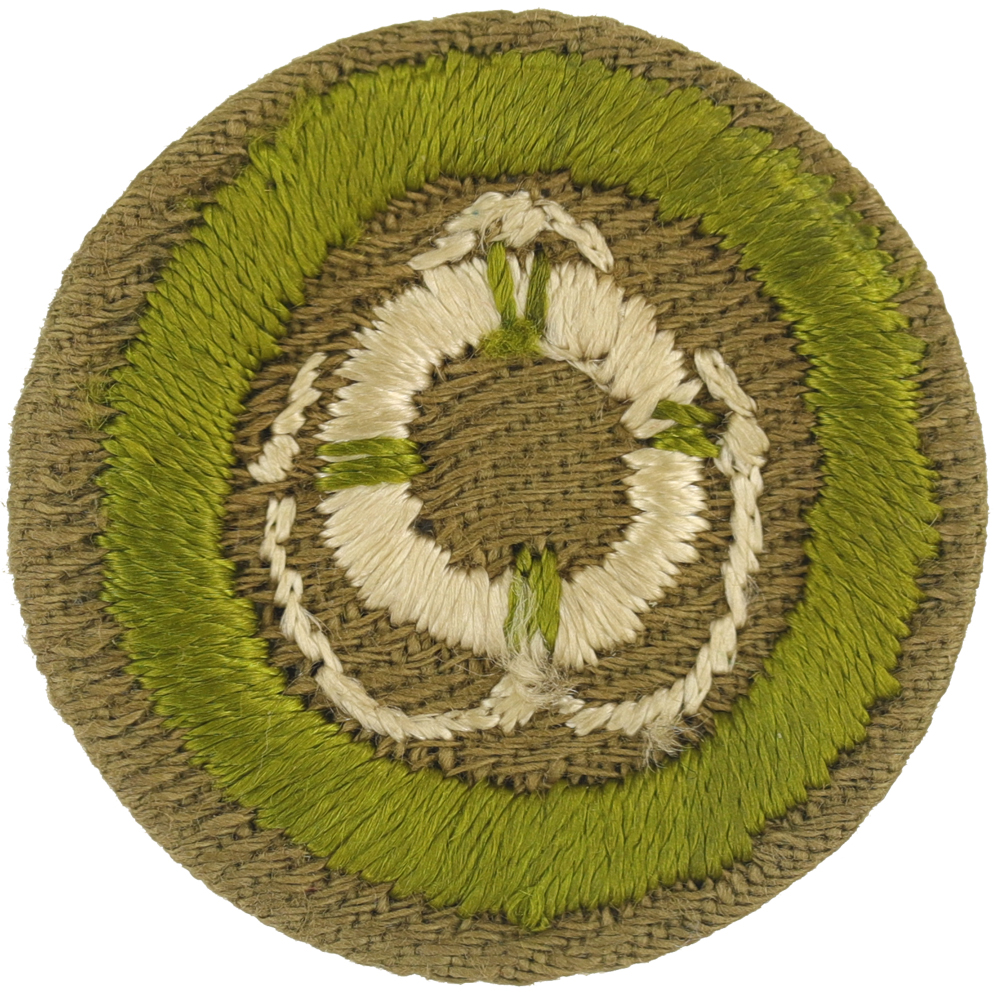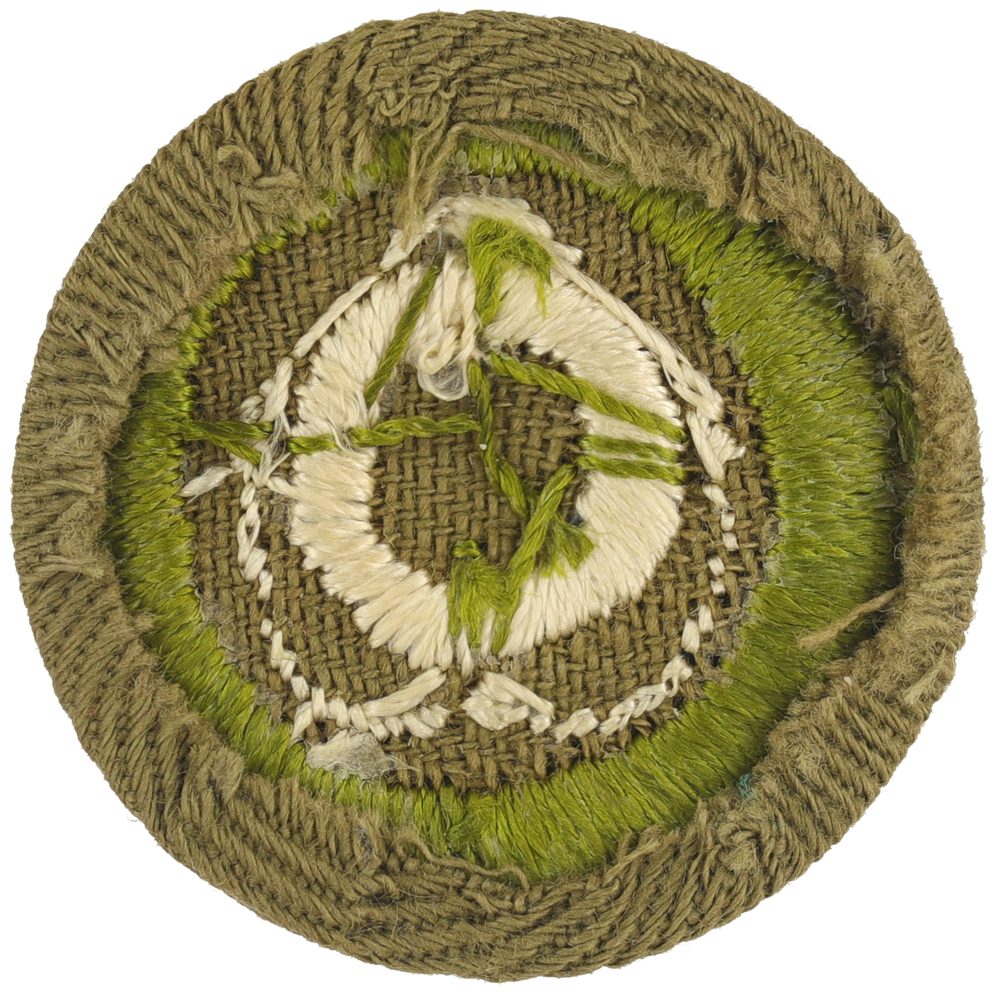
Fig. 1: LifSav-C3-Front
- Cloth: Heavyweight tan right twill
- Embroidery: Continuous loop silk

Fig. 2: LifSav-C3-Reverse
- Back: Plain NO imprint with starch
Item Name: Life Saving 1938 - 1939
Item ID: LifSav-C3
Collector Rating: 1
Requirements August 1929 until September 7, 1937. Between September 7, 1937 and January 1, 1938 these requirements were optional
To obtain a Merit Badge for Life Saving, a Scout must first have met the Merit Badge Requirements for Swimming, must have spent at least six hours in preparation and practice, and must demonstrate the following:
1. In deep water, disrobe and swim 100 yards.
2. Surface dive in 6 to 8 feet, recovering various objects three times, and a 10-pound weight once.
3. Correct approach, 30 feet, and head carry, 30 feet.
4. Correct approach, 30 feet, and cross-chest carry, 30 feet.
5. Correct approach, 30 feet, and hair or arm-lock carry, 30 feet.
6. Tired swimmer's carry, 30 feet, preceded by 30-foot approach.
7. Release double grip on one wrist. Left and right.
8. Release front strangle hold. Left and right.
9. Release back strangle hold. Left and right.
10. Resuscitation 1-1/2 minutes' demonstration, prone pressure method.
Requirements January 1, 1938 until November 1938. Between September 7, 1937 and January 1, 1938 these requirements were optional
(These tests must be performed before a Counselor who holds the American Red Cross Senior Life Saving Membership Card.)
To obtain a Merit Badge for Life Saving, a Scout must:
1. Demonstrate twice his ability to remove, except underpants or bathing trunks, street clothes* in 20 seconds or less.
2. Watching struggling person constantly, remove street clothes on shore in 20 seconds, enter water feet first (by jumping or running), swim 30 feet, make correct approach, and tow victim 30 feet with head carry.
3. Watching struggling person constantly, enter water feet first (by jumping or running) and -
(a) Swim 30 feet, make correct approach, and tow victim 30 feet to shore with hair carry.
(b) Swim 30 feet, make correct approach, and tow victim 30 feet to shore with cross chest carry.
4. Enter water with a pancake dive, swim 30 feet, make correct approach to a tired person and use tired swimmer's carry for 30 feet to shore.
5. In water at least 6 feet deep, demonstrate how to block effectively, or to avoid by ducking, the grasp of a struggling person and how to turn and place him in a position for towing ashore.
6. Release -
(a) Double grip on one wrist, left and right.
(b) Front strangle hold, left and right.
(c) Back strangle hold, left and right.
7. Demonstrate resuscitation, 1-1/2 minutes, prone pressure method.
8. Surface dive in 6 to 8 feet, recovering various objects three times and a 10-pound weight once.
9. In deep water, remove street clothes, and swim 100 yards.
* Street clothes mean socks, low shoes, underwear (or bathing suit), trousers, shirt, tie, and coat or sweater or sweatshirt.



